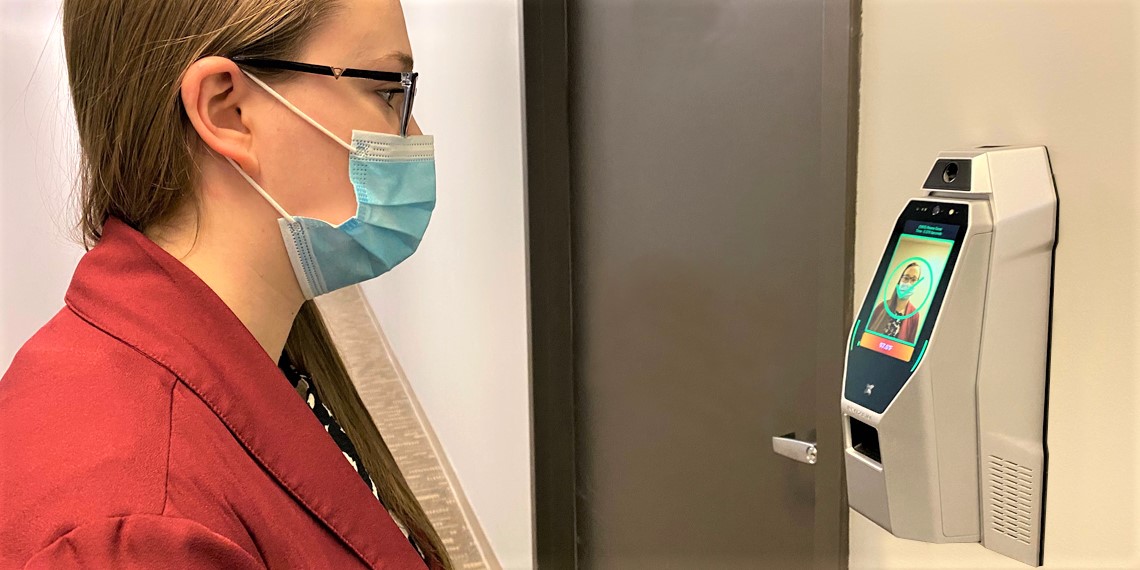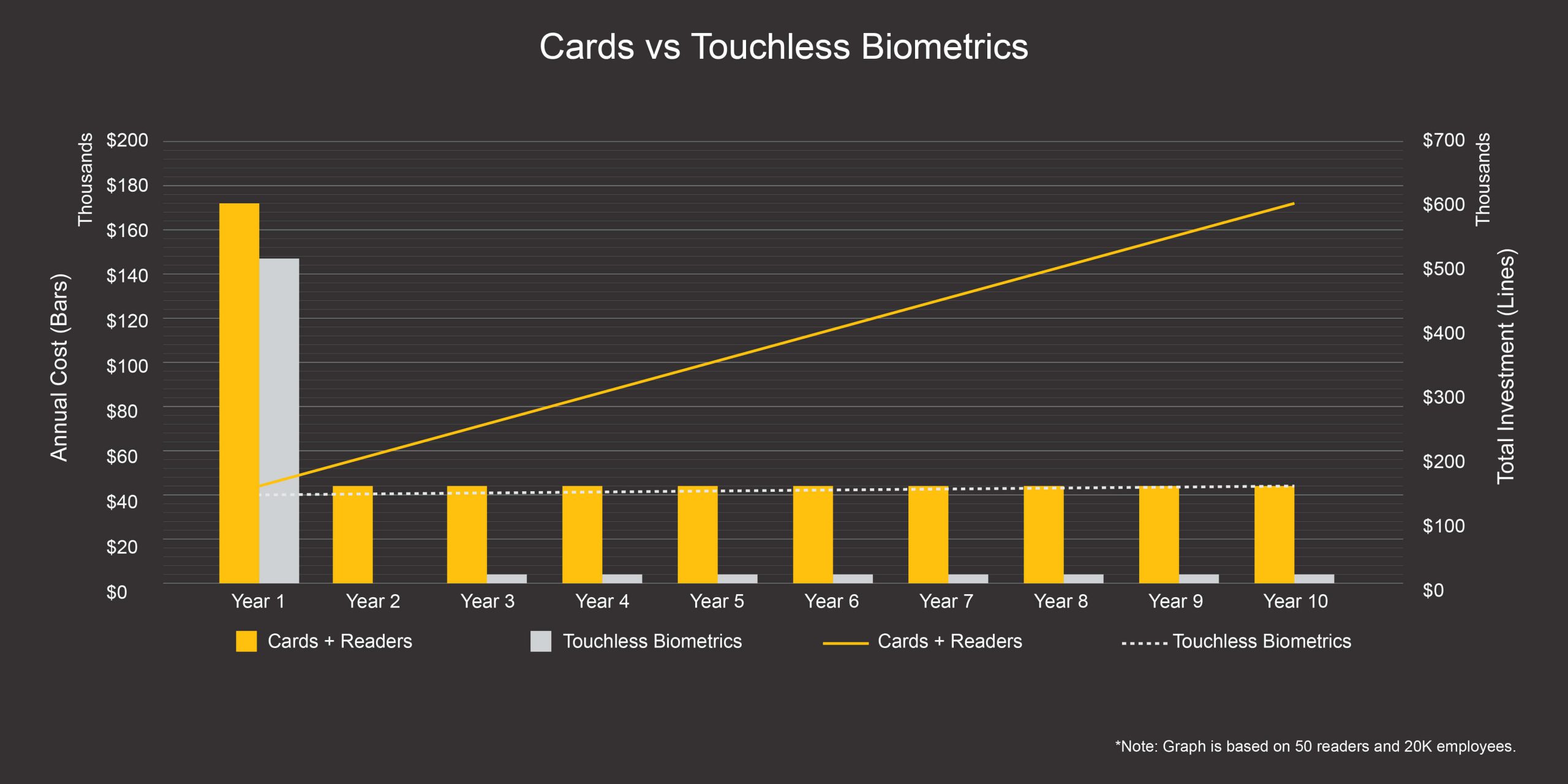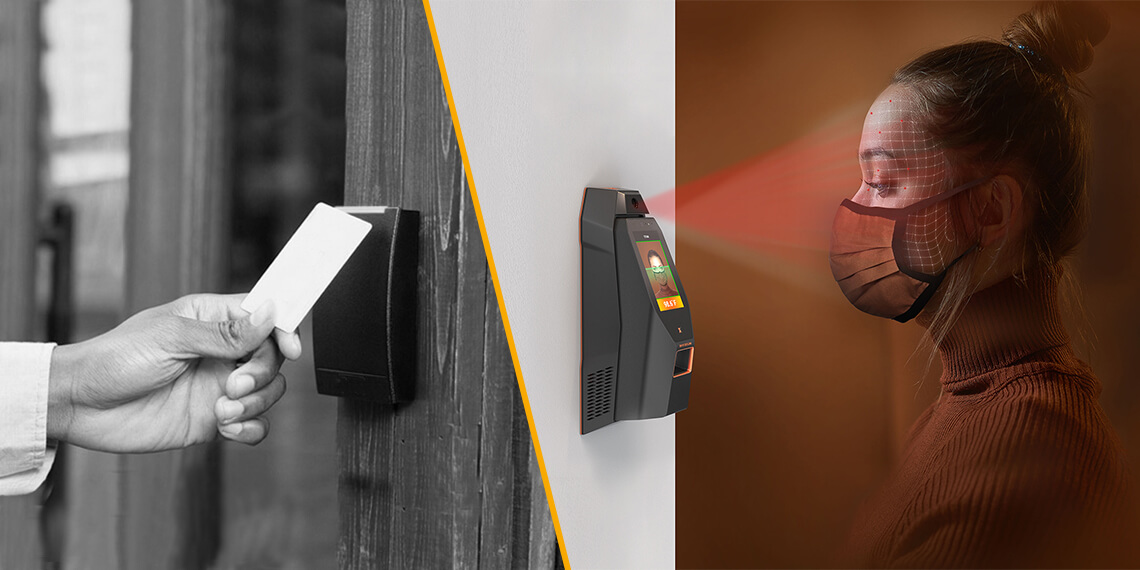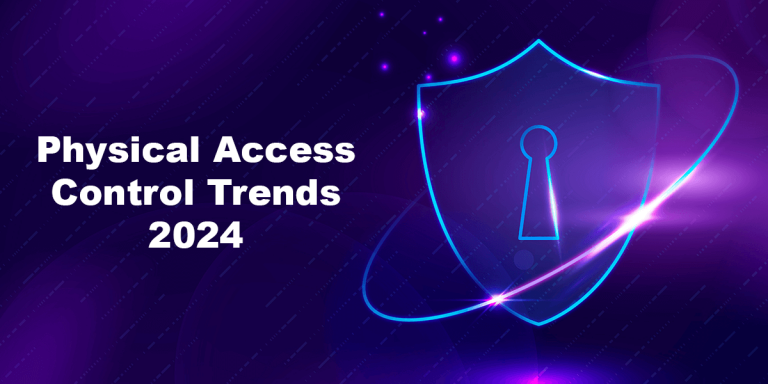In 2020, touchless biometrics have seen rapid advancements in technology and monumental increases in adoption. This momentum won’t slow down in 2021, so businesses worldwide are exploring this modern technology and asking the question: are biometrics right for my building?
Mordor Intelligence values the access control market at US$7.6 billion in 20201. The COVID-19 pandemic has forced enterprises to rethink what building security looks and feels like, leading to an industry-wide shift toward touchless access control technology. Cards are the natural choice for a majority of enterprises because they are cost-effective to install, easy for staff to use and touchless for hands-free entry. However, card-based access systems feel antiquated to businesses who want a new method of door security.
Future-focused enterprises combine their access control system with new health and safety orders mandated by their governments. Temperature checks, face masks and health questionnaires are common security measures businesses have implemented to protect staff and visitor health, but card systems cannot satisfy these needs on their own. Cards also include annual expenses for each new individual enrolled, plastic waste and inherent risks of card-sharing that biometrics by nature mitigate.

Touchless Biometrics Offer Untouchable Benefits
Biometrics are the ID that’s always with you. A person’s face cannot be copied or stolen, which means face recognition technology includes an added layer of security by using an identifier that is already unique to each person. Biometric solutions engineered to provide the utmost security also boast features like liveness detection and spoof protection to deny access if the device determines that a person is holding up a photo or prosthetic mask of an authorized person to nefariously gain access.
Face recognition technology has more room to scale than cards do. Cards have been used for access control since the 1960s2, but has not grown exponentially as face recognition has. Artificial intelligence was first used to match photographs of human faces in the 1960s3 and has since become ubiquitous in our lives as a way to access buildings, our phones, our bank accounts and more. Today, face recognition can match a person to their enrolled credentials in seconds with incredibly high accuracy. Comprehensive face recognition systems also include mask detection and temperature screening technologies that card systems cannot compete with, offering businesses a complete solution for a world concerned with individual health.
How Touchless Biometrics Stack Up Against Card Access
The modernness and agility of face recognition come at a premium cost compared to implementing more traditional card readers. However, readers and cards combined amount to a higher cost-of-entry than a face recognition device, which doesn’t require additional materials like cards or access control panels. Investing in an advanced access control solution today ensures that your system is supported as technology grows and your business’ needs evolve.

The graph above compares the Total Cost of Ownership (TCO) over a span of ten years for a card-based access system and a touchless face recognition solution. Enterprises with 20,000 employees can spend up to US$40,000 per year on issuing new cards and system maintenance for card-based systems. While we assume businesses will invest in new or replacement cards at a rate of 20% of their first-year total each following year, this amount also includes software, support and other incidental costs to maintain the system.
Touchless face recognition only requires you to install as many readers as you need to secure critical doors at your building. Because each individual using your readers will always have their face with them, the upkeep cost of purchasing or replacing cards will never be an issue with a biometric access control solution. Further, upgrading to biometrics reduces plastic waste in the environment. If an employee leaves your company, you can delete or archive their biometric data instead of collecting or throwing away their access card.
Nearly all biometric products operate on the same Wiegand protocol as card readers, so upgrading from cards to face recognition is not as daunting as it may seem. Most biometric products are also powered using PoE, which is a one-cable solution for power and communications that provides additional cost savings. Further, products with on-board computing eliminate the need to invest in a separate access control panel for businesses with 10 doors or less.
Card-sharing, buddy-punching, and intentional or unintentional time theft affect up to 75% of businesses every year4, leading to lost profit and productivity. Eliminating cards and investing in a highly-secure, highly-accurate alternative like face recognition mitigates these risks while providing employees and visitors a fast, easy and touchless way to access your building.
Invest in Touchless Access Control for Your Business’s Health and Security
Our expert sales team is here to help you select the best touchless biometric access control solution for your business based on your unique needs. As always, Invixium strives to be your preferred biometric manufacturer by offering the finest technology on the market with knowledgeable guidance.
Contact us:
sales@invixium.com
For more information, visit:
invixium.com
Sources
1https://www.mordorintelligence.com/industry-reports/global-access-control-market-industry
2https://info.jobrien.com/hubfs/Infographics/Progression%20of%20access%20control.png
3https://www.wired.com/story/secret-history-facial-recognition/
4https://www.forbes.com/sites/ashikahmed/2018/01/19/how-to-insure-against-time-theft/?sh=78a59d555ac8






